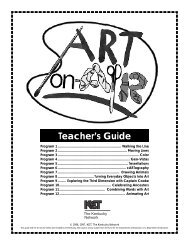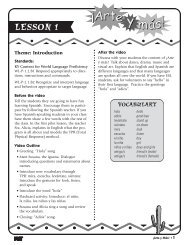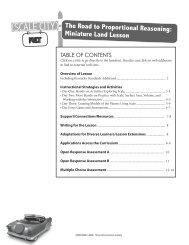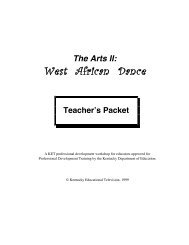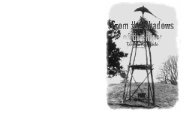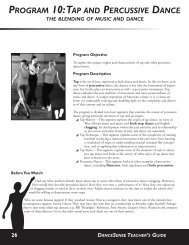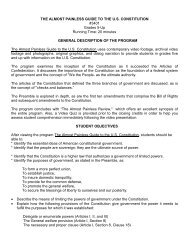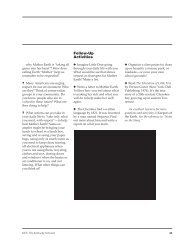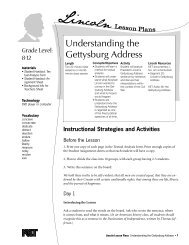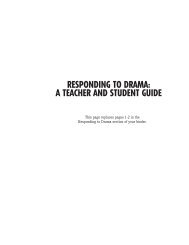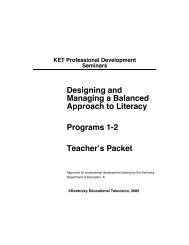7369 old music 2402 - KET
7369 old music 2402 - KET
7369 old music 2402 - KET
Create successful ePaper yourself
Turn your PDF publications into a flip-book with our unique Google optimized e-Paper software.
So John Henry hammered on the mountain<br />
His hammer was striking fire<br />
But he worked so hard that he broke his poor heart<br />
Laid down his hammer and he died … (2 times)<br />
Now the man who invented the steam drill<br />
He thought he was mighty fine<br />
But John Henry, he had driven fifteen feet<br />
And that steam drill had only made nine … (2 times)<br />
Now every Monday morning<br />
When the bluebirds begin to sing<br />
’Way off yonder, ’bout a mile or more<br />
You can hear John Henry’s hammer ring … (2 times)<br />
Hambone<br />
Hambone is the ultimate development of the body-rhythm exercises I introduced<br />
in my first program. I learned it from an African-American carnival performer when I<br />
was a child. It uses the whole body as a “drum set”—feet, hands, arms, face, and<br />
legs—to produce different sounds and combine these sounds for both<br />
accompaniment and solo work. My first exposure to hambone included a sing-song<br />
based on “The Mockingbird”:<br />
Hambone, Hambone, where you been?<br />
’Round the world and back again.<br />
Hambone, Hambone, have you heard?<br />
Papa’s gonna buy you a mockingbird.<br />
If that mockingbird won’t sing …<br />
and so on.<br />
The Awful Hilly Daddy-Willie Trip<br />
(Words and <strong>music</strong> by John and Willie McCutcheon)<br />
Finally, I go from an example of improvisational rhythmic <strong>music</strong>—the hambone—<br />
to the idea of creating your own songs with “The Awful Hilly Daddy-Willie Trip.” My<br />
<strong>old</strong>est son and I composed this song (one of our “car-tunes”) on a long trip. In it<br />
there are observations of where we are along the journey, dreams about what<br />
we’re going to do when we get there, what’s going on at home in our absence, and<br />
excitement about a birthday that’s coming up the next day. Writing songs can be<br />
one of the most exciting and liberating things a person can do.<br />
The guitar, used as the accompanying instrument on this song, is also an<br />
African instrument, this time from northern Africa. It was introduced to white<br />
<strong>music</strong>ians relatively late, about the turn of this century, mostly by African-American<br />
railroad crews.<br />
54 Old Music for New Ears Teacher’s Guide



